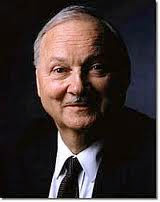Beyond Fast Fashion - an Event by The Circular Fashion Initiative held during the UN Environment Assembly
By Chris Tomkins on behalf of the Stakeholder Forum for a Sustainable Future
Standing room only at The Circular Fashion Initiative, which brought together a high-quality panel and contributors from the fashion business, UN, governments, and other stakeholders to (1) point the Fast Fashion business towards sustainability (2) influence the wider fashion business and textile industry, and (3) helping a large, influential and dynamic industry and associated consumers contribute to global development goals, from climate change and pollution to better working conditions and health for [millions] of people around the world
The discussion was moderated by Felix Dodds, Director of Walton
Sustainability Solutions, Arizona State University, and Fellow of the Stakeholder
Forum for a Sustainable Future.
He posed several questions ranging from the importance of clarifying: what is
Fast Fashion and its impact; how can innovative economic and circular economy
models in the value chain help shift fashion towards a more sustainable path;
how can UNEA and governments help, including the use of corporate reporting and
sustainability standards; how can we tap
into, make use of and enhance various initiatives, business models and trends
in the industry towards overall sustainability.
The discussion was fronted by a stimulating short film 'Beyond Fast Fashion’ by Arizona State University's Sustainable Earth which brought home the impact and challenges of Fast Fashion.
There were remarks by Roberta Annan – Fund for African Creatives, Ghana,
which set the tone for a global and lively discussion.
Iona McCreath, KikoRomeo Kenya, underlined a can-do approach and
the possibilities and opportunities going forward, including through her own
team. Important to tap into the
creativity and dynamism of younger people not in least in Kenya and Africa
generally.
Asli Flinta (Lead Designer Asli Flinta, Turkey) emphasized that the Fashion
industry was diverse; that a number of younger/newer designers and businesses were
moving in the right direction; but that the influence of the great fashion
houses was still paramount - they often set the template for what was spun off
into the Faster Fashion world and a key entry point to overall sustainability was
for them to move towards sustainable fashion.
Dr Gorkem Hayta – Fashion Entrepreneur/Royal Film developed the youth-led theme,
pointing out that fashion can support youth and vice versa in taking forward
sustainability. She also pointed out the
role of media and perhaps the need to redefine the notion of Fashion in this
context.
Michael Stanley-Jones, Senior Advisor, Circular Research Foundation Italy emphasized the need to draw the approach to fashion sustainability within the wider orbit of corporate reporting, accountability and regulation. Such cross-cutting approaches, eg the EU Directive on Corporate Reporting showed there were metrics, tools and frameworks which could help drive the industry around the world towards sustainable imperatives.
Theo Silverston (UNEP) and Glen Wilson (UNCTAD) in highlighting the
initiatives of their own organisations (eg the UN Alliance on Sustainable
Fashion, the promotion of different organic fibres, sustainable stock exchanges, and second-hand
clothing) stressed the need for lessons and approaches to be brought
together in a more concerted way, helping to bridge the gap between policymakers and entrepreneurs and businesses on the ground.
Henry Wanjala Co-Founder of Kenya Boys Choir and Fashion Entrepreneur, Kenya also drew attention to the role of younger people, releasing their energy drive and willingness to contribute to development goals practically.
Ms Christine Omollo, Tomollo Fashions, Kenya in drawing attention to Tomollo pointed out that companies such as hers were already helping to shift away from the sharp end of Fast Fashion to a higher quality, more durable market approach using different fabrics, whilst maintaining the attractiveness of clothing and the enjoyment behind it.
Key points which emerged in the presentations and event were:
- Fast Fashion emerged for certain reasons to do with the bulk use of certain materials to bring costs and prices down to a wider demographic
- In that model, it could be considered inherently unsustainable but as various initiatives and approaches were showing fashion could be sustainable, attractive to younger people and value for mone.
- The Key was identifying and utilising entry points and drivers which placed the Fashion Industry within frameworks, such as the circular economy, and regulatory and reporting approaches which helped create an industry-wide sustainability approach
- One which at the same time allowed smaller enterprises, entrepreneurs and designers to compete fairly in their own attempts to retain the vitality and youthfulness of the business whilst promoting sustainability across the industry
- There was a need to pull together a clearer understanding of the various initiatives and approaches – cross-cutting, top-down, bottom-up – that were helping promote Sustainable Fashion, building bridges between policymakers and what was happening on the ground





Comments
Post a Comment